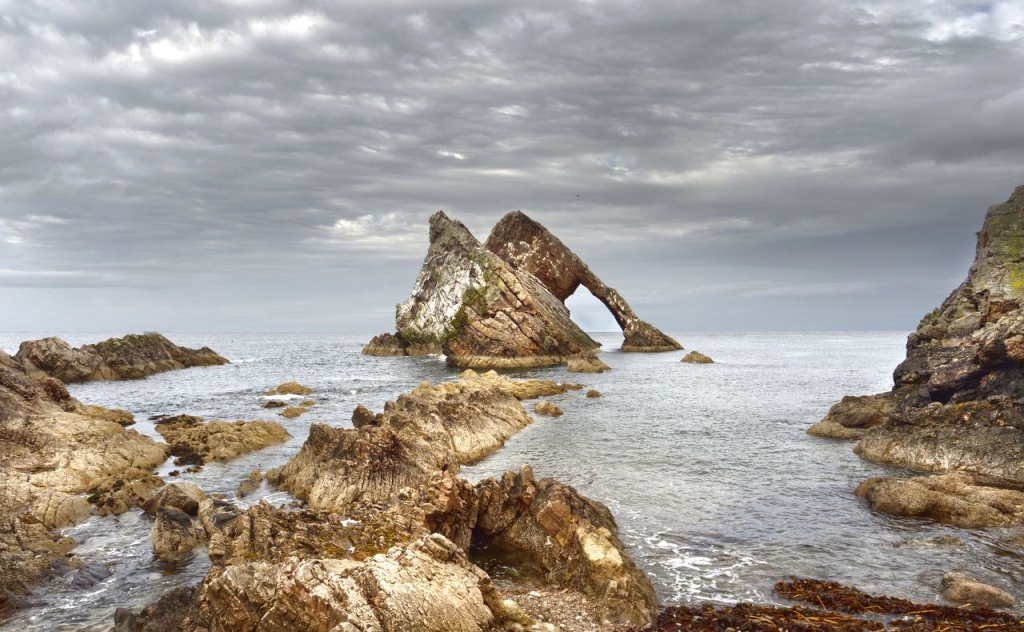
For the best viewing experience, left-click the images and maps to zoom in to a new window, then exit that window to go back – go on, it really does work!
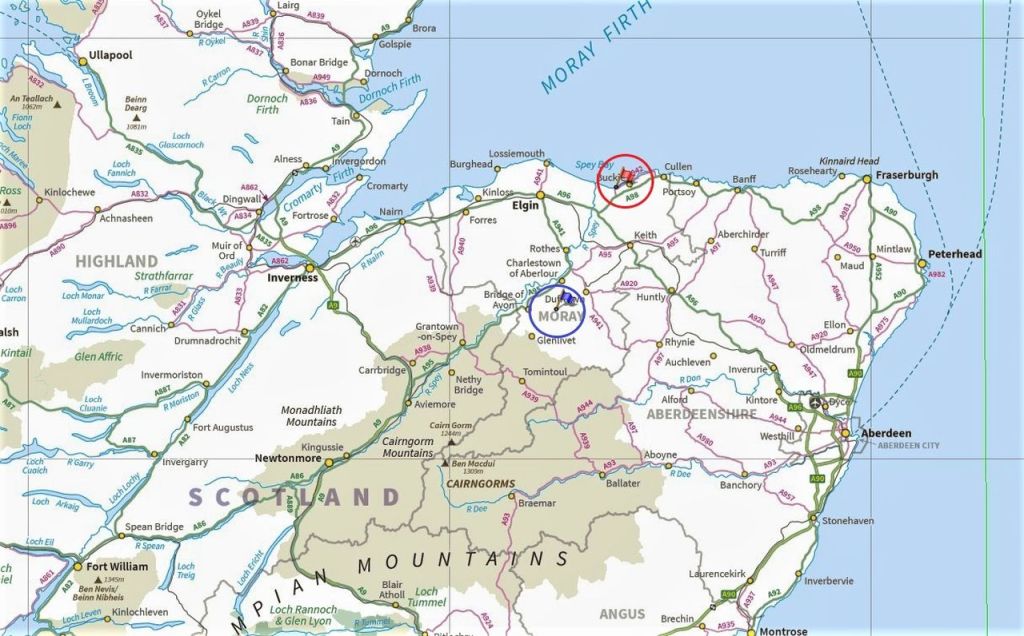

Although September is usually a month of fine, settled weather in the Scottish Highlands, we didn’t have much luck there on our September 2022 trip. Unbeknown to us at the time, our trip out round the hidden northern side of Liathach (see post #330) was to be one of our few ‘good weather’ days. When the wind and rain arrived, we headed east, eventually aiming for Speyside, an area famous for its single malt whisky, but otherwise unfamiliar to us.
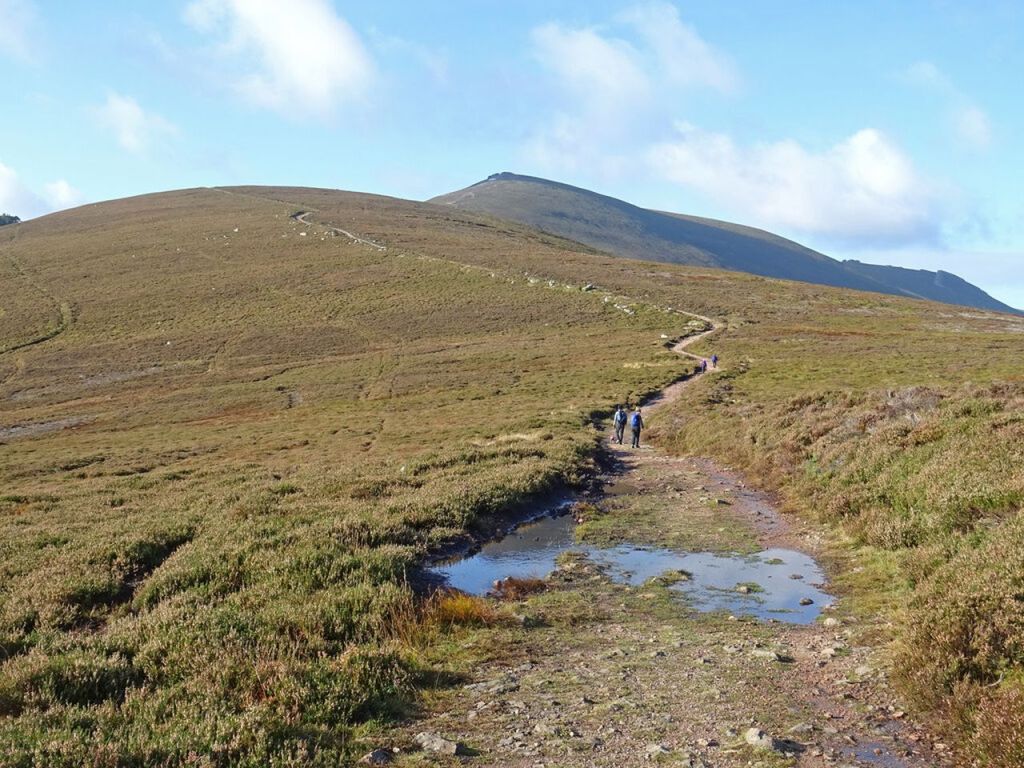
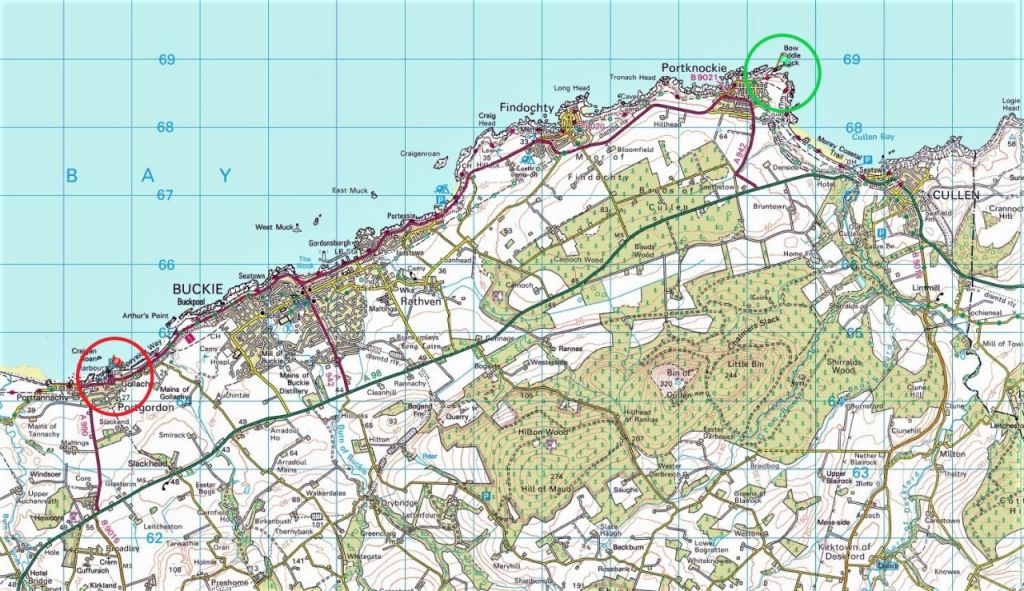
If Speyside is well known for its whisky, it’s less well known for its lofty mountain peaks, but a little research came up with an interesting looking mountain day, in the shape of Ben Rinnes. At a height of 840 metres (2755 ft), Ben Rinnes wasn’t quite one of the lofty peaks we had come to the Highlands for, but it would do fine in the circumstances. That was until the squally showers of the West Highlands caught up with us – we bailed out and headed for Portgordon on the coast.
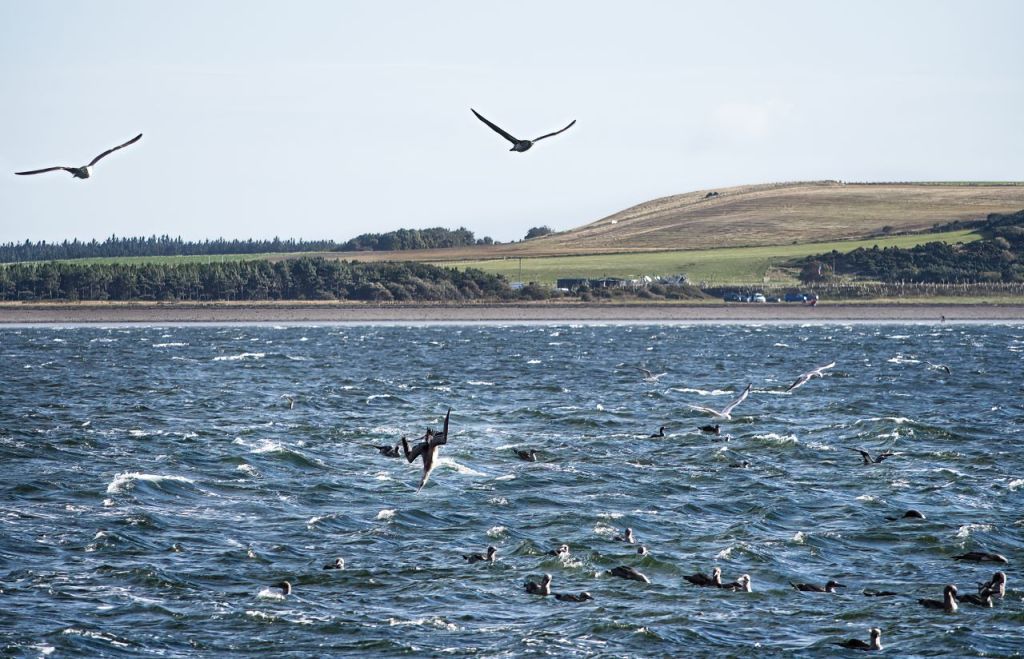
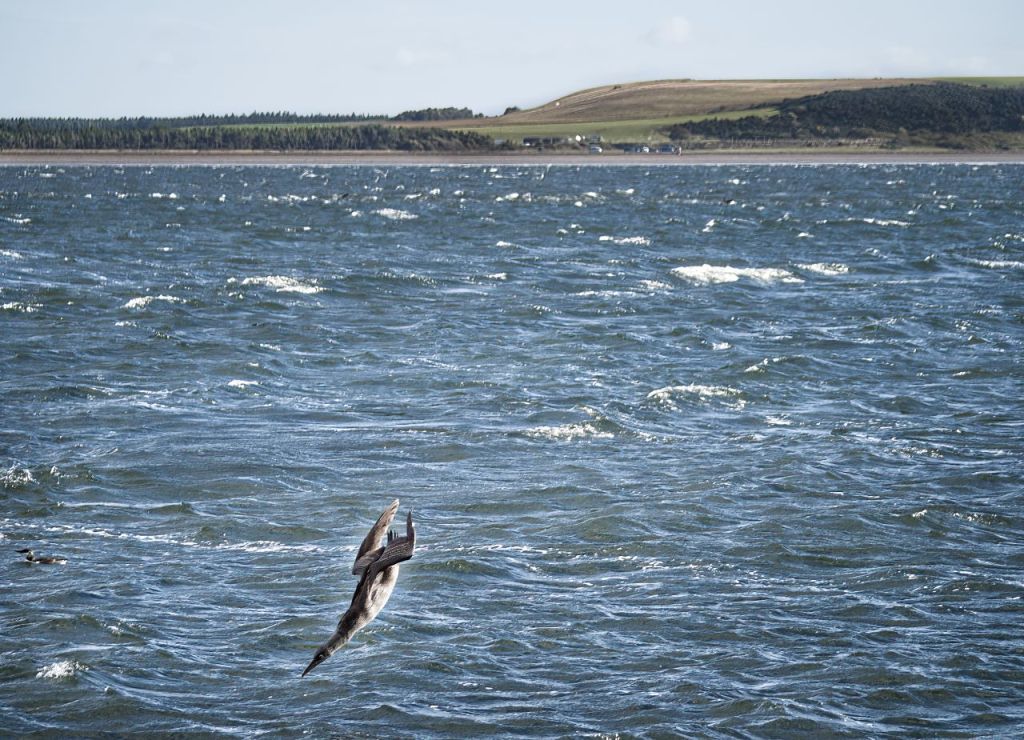
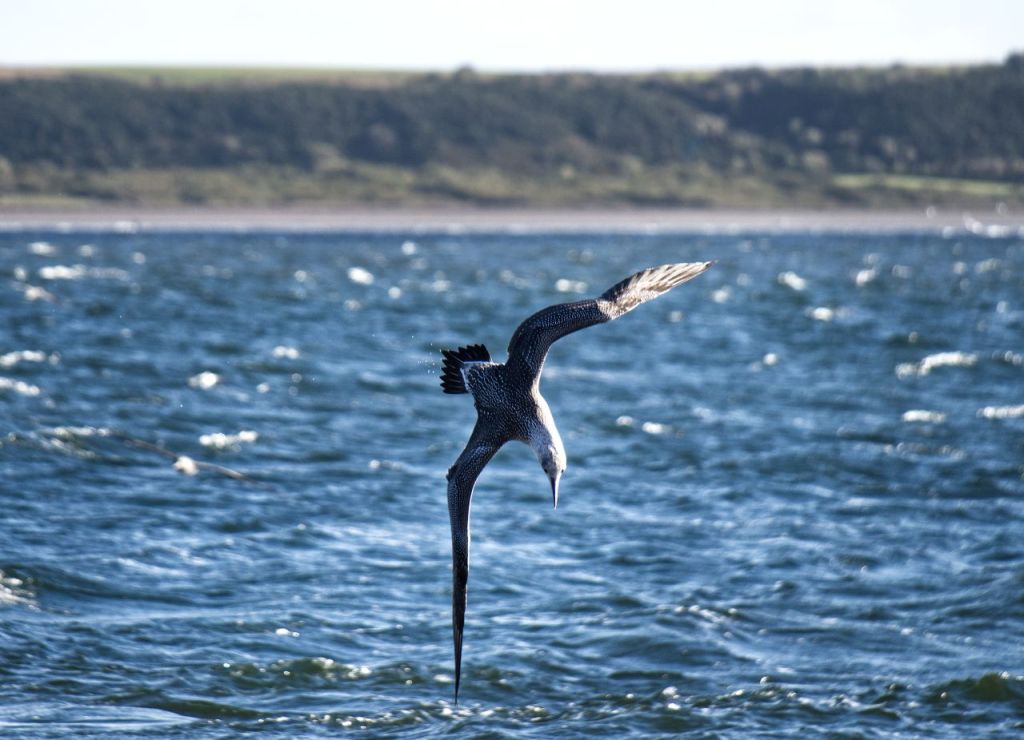
Now, this is a blog about mountain days, with photos of mountains and stories about mountains, but occasionally a change of scene looks like a good idea, especially when the weather prevents you from even seeing the mountains! A couple of days earlier we had been at Rosemarkie on the Black Isle, hoping to see dolphins at Chanonry Point – it was a ‘no-show’ by the dolphins, but a fine display of fishing by the local gannets had been a consolation prize.
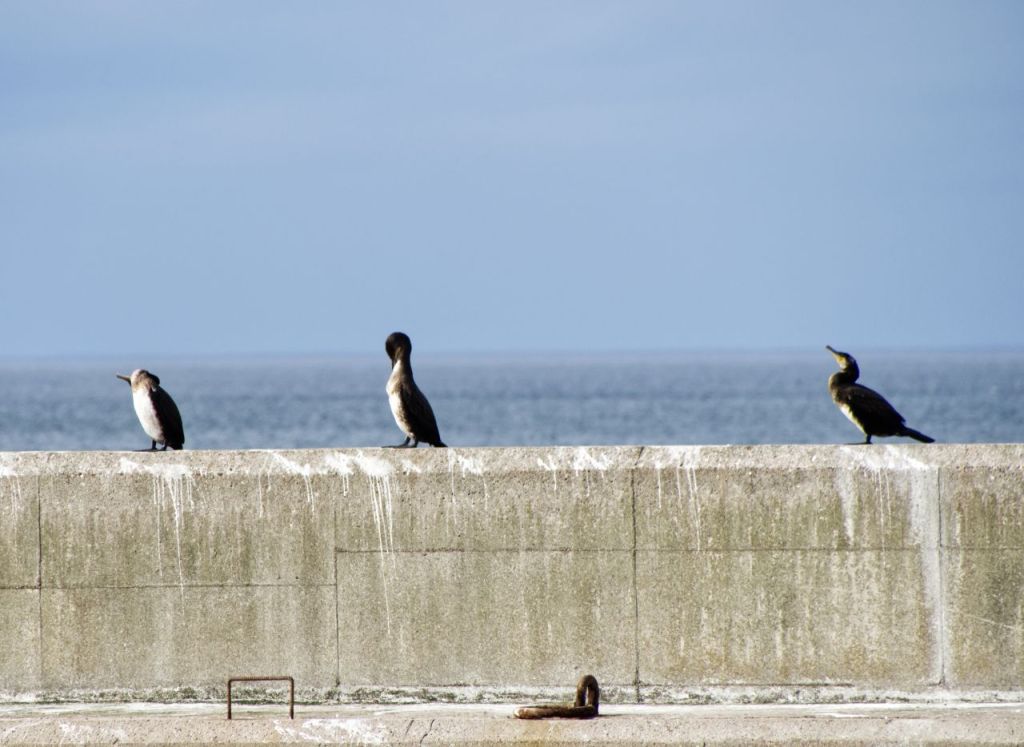
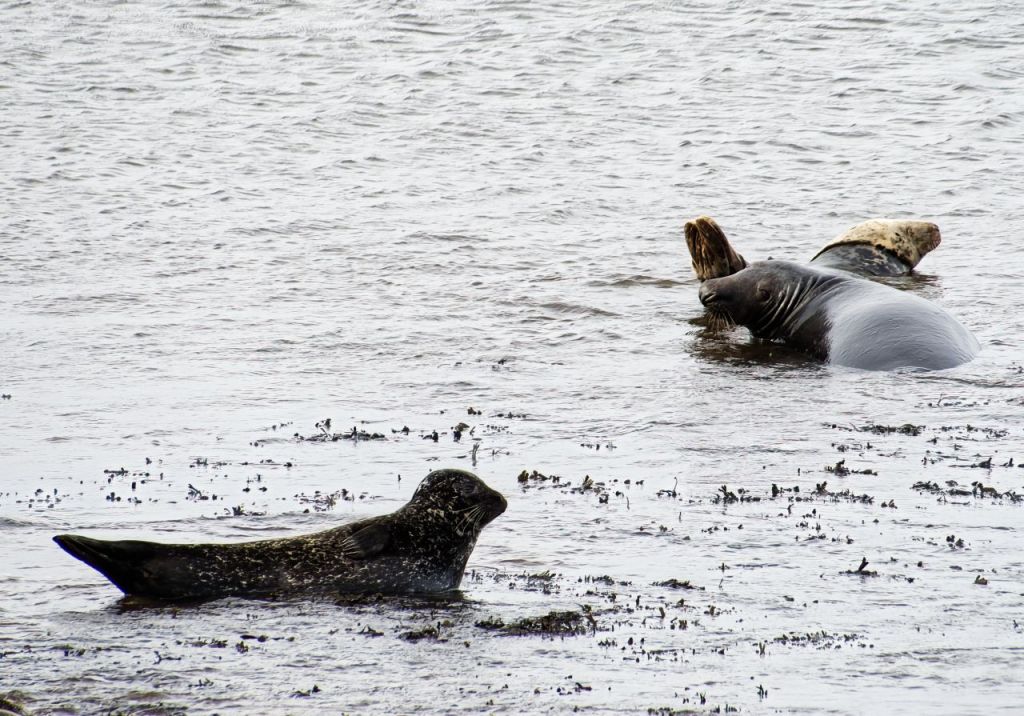
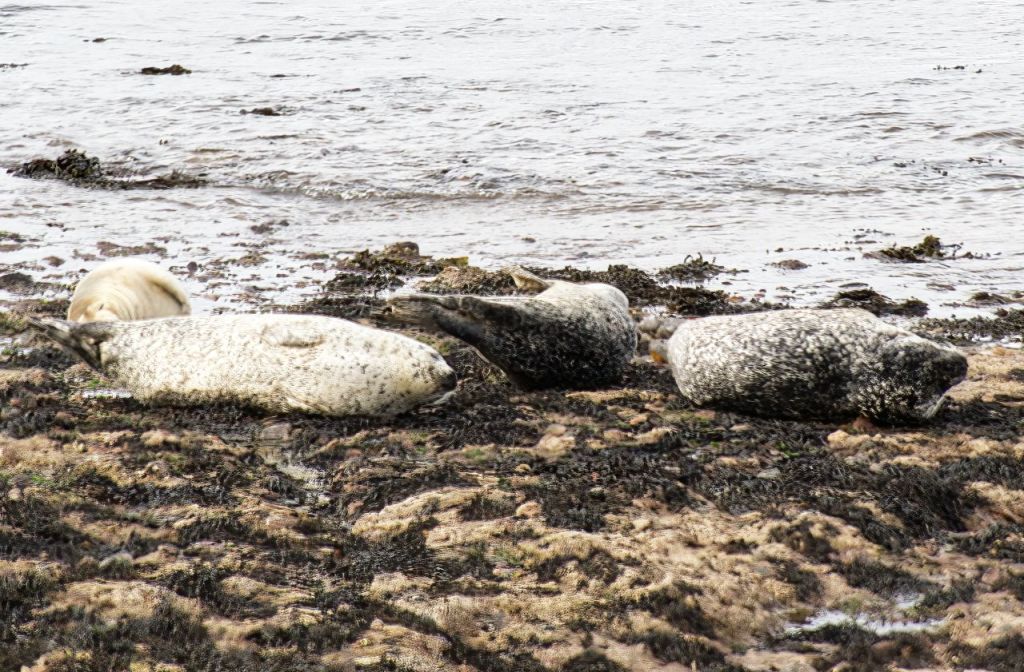
The wildlife at Portgordon was a bit less lively, in fact there wasn’t much going on at all with the harbour cormorants and seals, but Portgordon is that kind of a place, a haven of peace where we could park up and decide what Plan B was going to be. Plan B turned out to be a drive along the coast to the village of Cullen, home of the famous Cullen Skink, a thick soup of smoked haddock, potatoes and onion. It wasn’t the soup that grabbed our interest though, it was the amazing rock arch known as Bow Fiddle Rock.
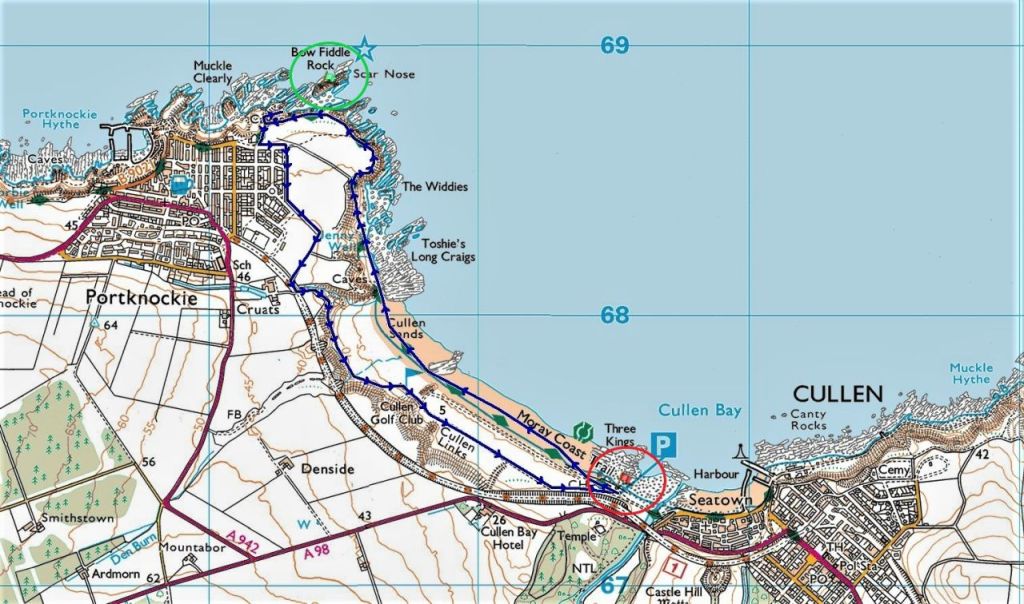
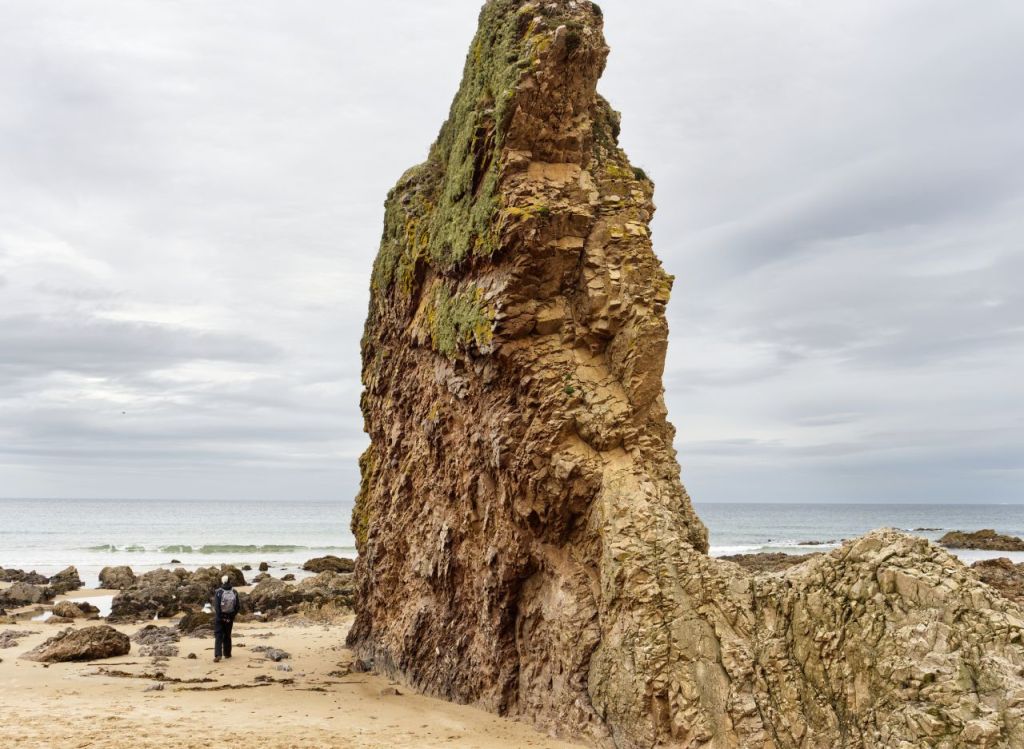
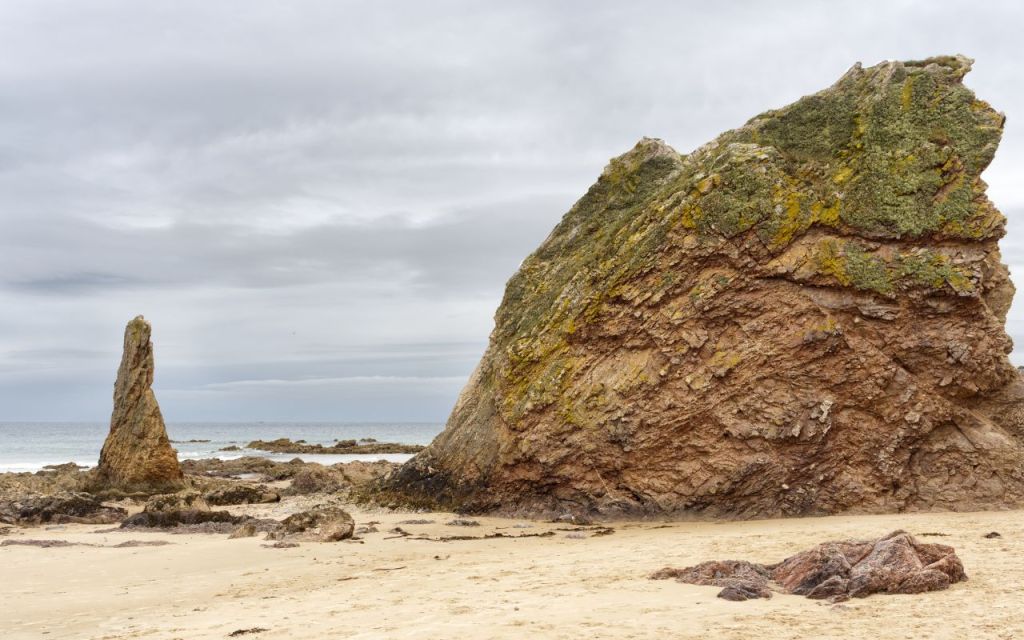
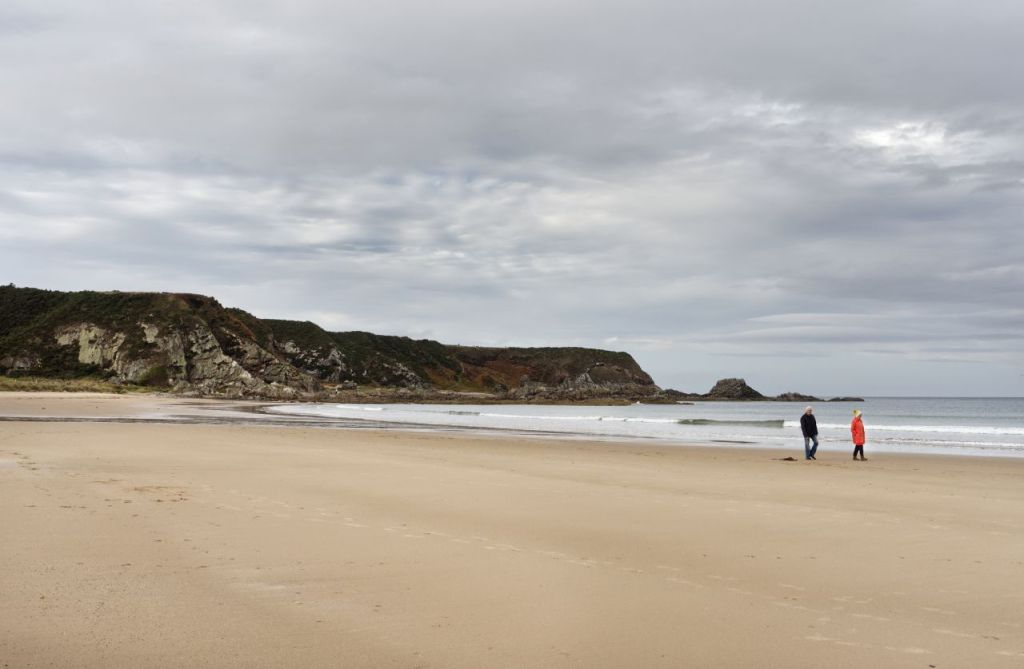
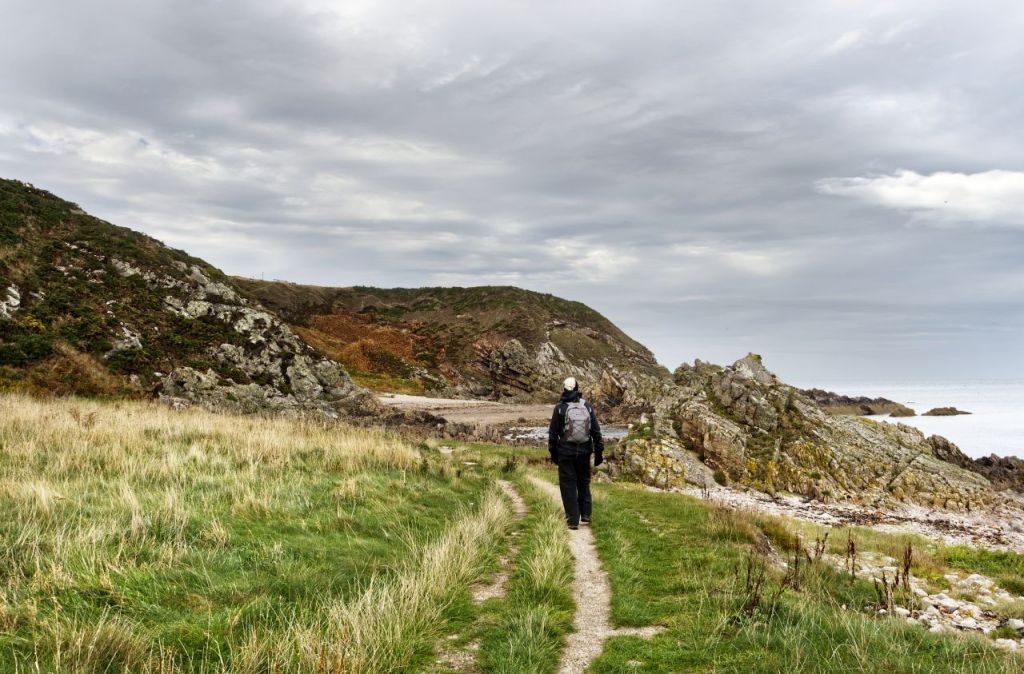
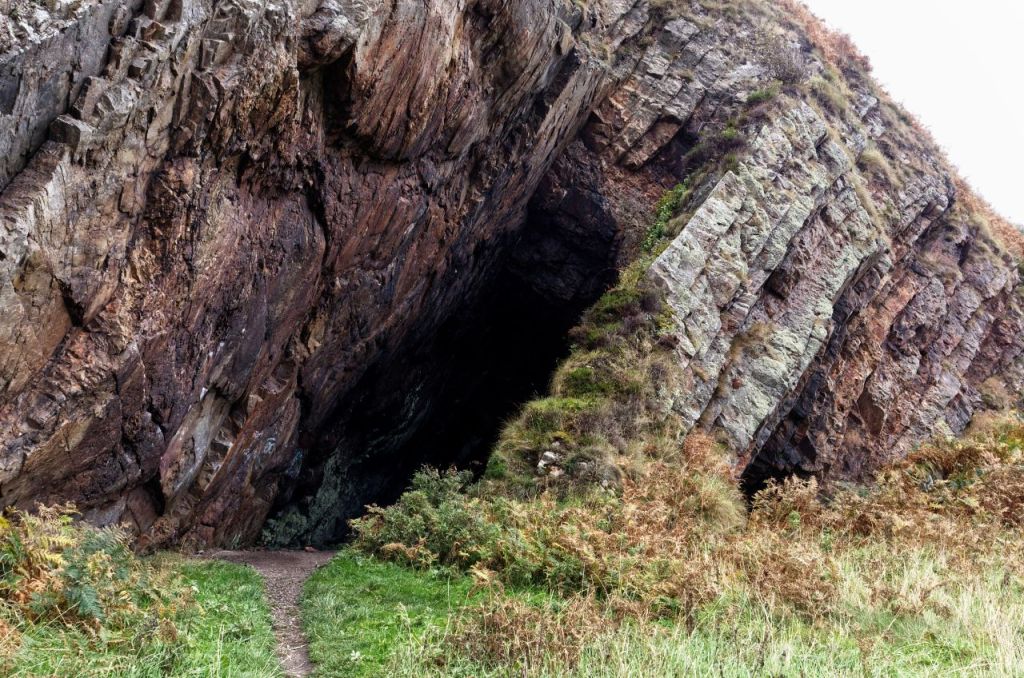
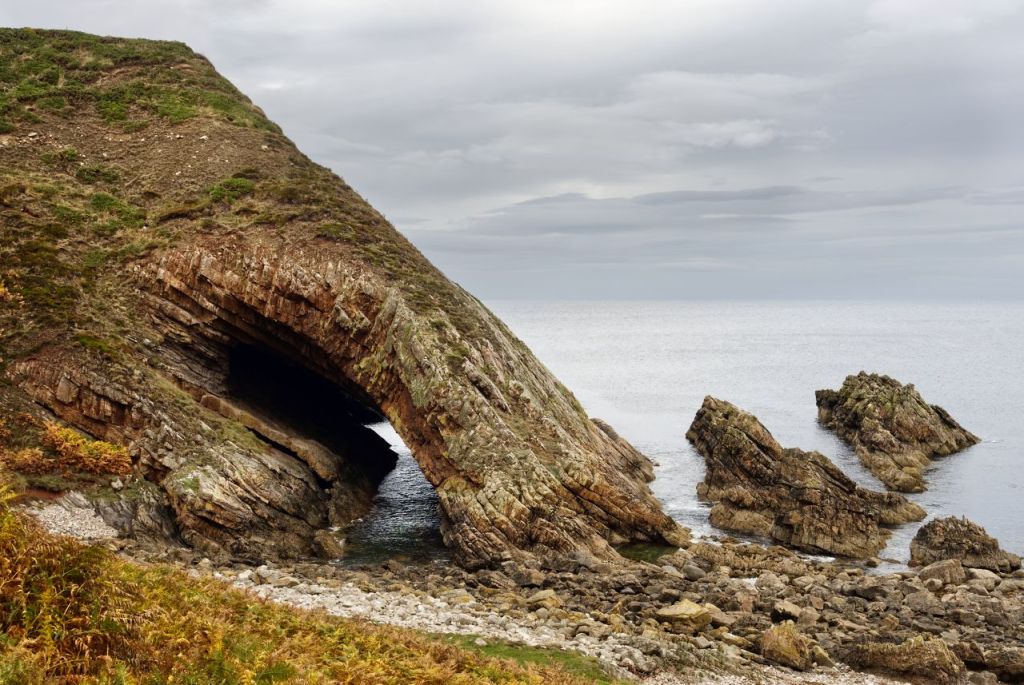
Our route started from the golf course on the edge of Cullen village, near to the rock stacks known as ‘The Three Kings’ – from there, a pleasant beach walk along the Moray Coast Trail led us across Cullen Sands, before the path narrowed as it wandered past caves, both on land and in the sea. The folding and erosion of the cliffs along the path was quite spectacular, but the natural sea arch of Bow Fiddle Rock is the real star.

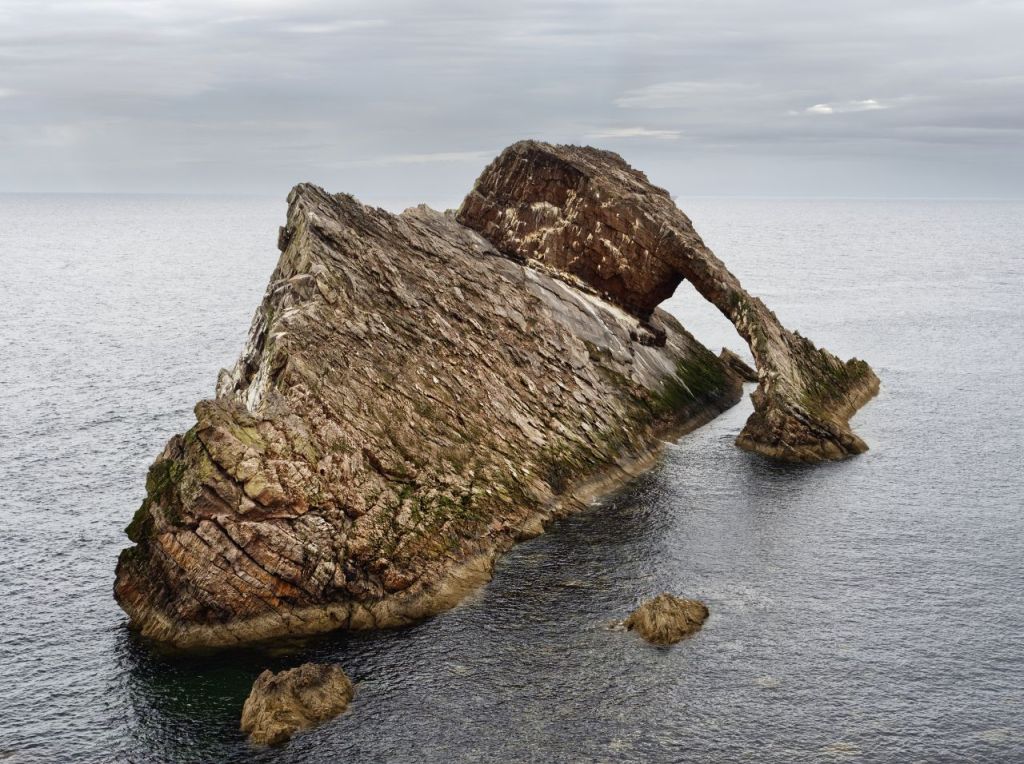
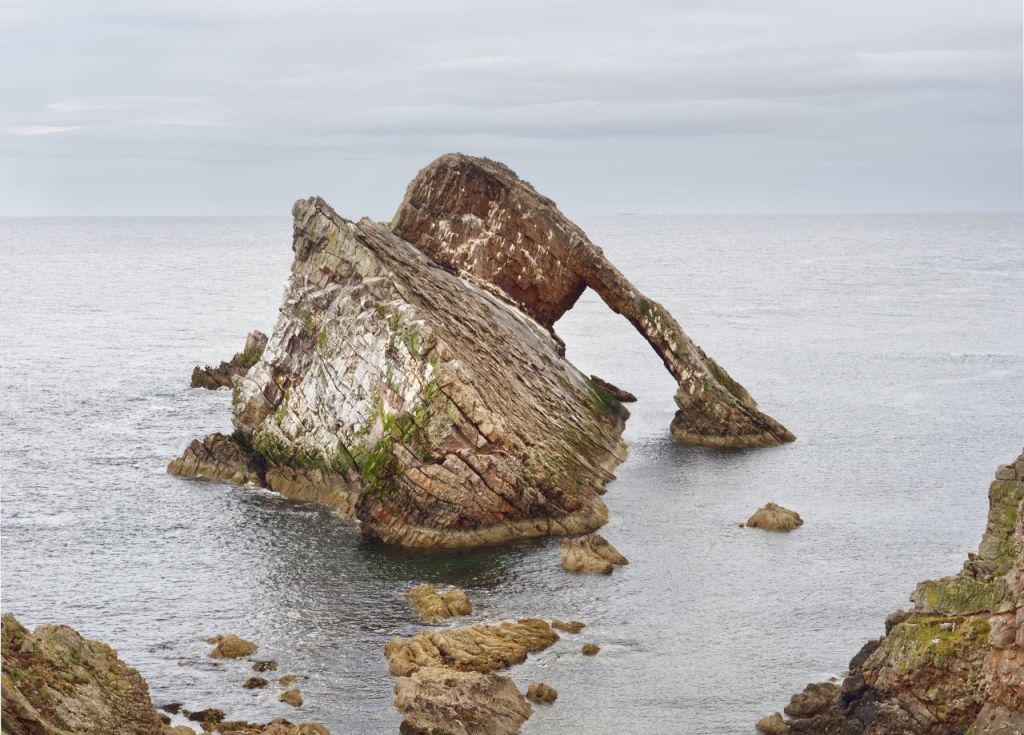
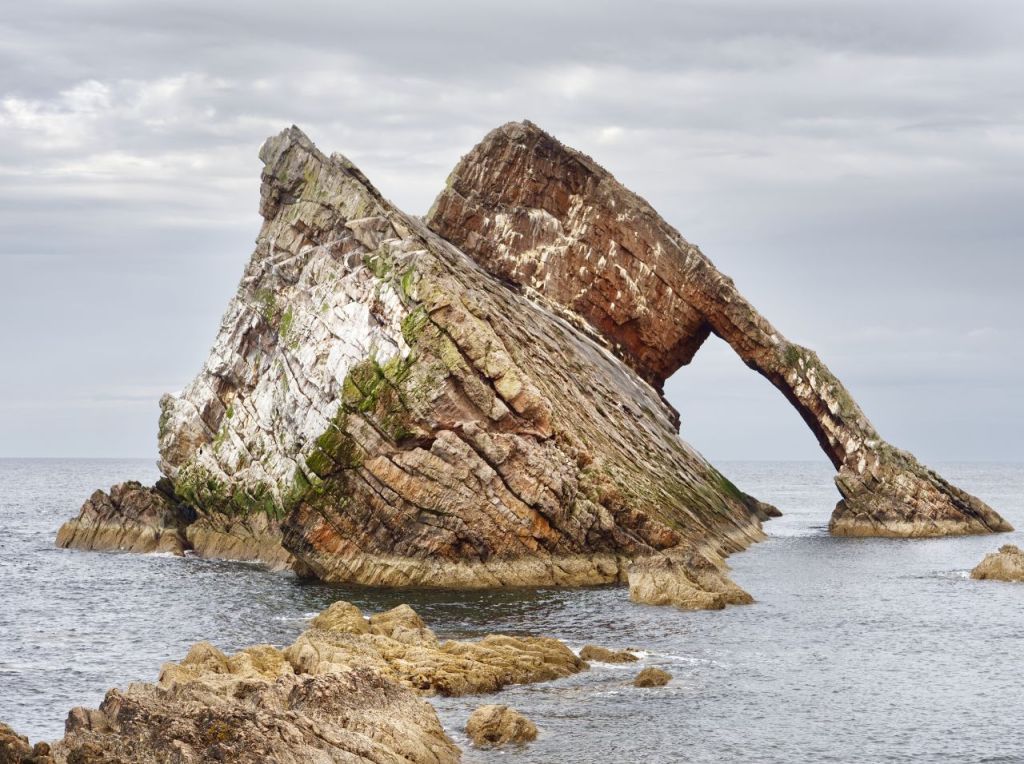
I’m sure that some readers will want to know that the quartzite rock which forms the arch is between 539 and 1,000 million years old, and that the rocks were folded when the ancient continents of Laurentia and Avalonia collided roughly 400 million years ago. Since then, the rocks have become exposed and eroded by sea and weather to give us Bow Fiddle Rock as it is today. However, most of us will be happy enough just to see the amazing rock formation – it might not be a lofty peak, but it was well worth the short walk to see it.

I spent some time with the camera, despite the light being a bit less than amazing – to be honest, I was thankful it wasn’t pouring down, as it had been on Ben Rinnes. We returned to sleepy Portgordon for an overnight stop and were rewarded with a memorable sunset – when it comes to weather, you sometimes have to make your own luck.
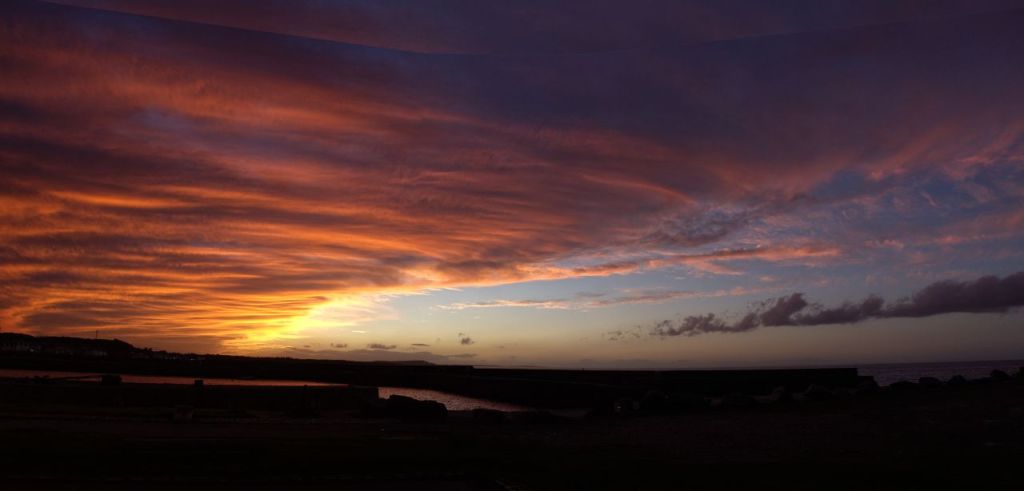
Text and images © Paul Shorrock, except the image of Ben Rinnes, tagged Adam Ward, which is taken from the Geograph Project and reproduced under a Creative Commons Licence




Well it’s a great sunset at the end! I’ve only been as far east along the Moray Firth as Lossiemouth but used to frequent the coastline between there and Burghead/Hopeman a lot. Bow Fiddle Rock looks really interesting – would be great to get a boat and land there and have a toddle up that fiddle – looks a good angle for romping up!
LikeLike
I’m sure I read somewhere that someone swam to it for a find raiser – it’s certainly not a long swim. I once swam with a rope to a Cornish sea pinnacle called the Irish Lady and my non-swimmer mate crossed over on a Tyrolean rope traverse – he got a round of applause from a crowd of folk, after I had done the risky bit of landing in a moderate swell. We then climbed it – a bit daft really!
LikeLiked by 1 person
You were certainly the one taking the risks! Must’ve been hard swimming dragging a rope anyway!
LikeLike
Pingback: #332 – Creag Bhalg ….on the trail of the lonesome pine | Paul Shorrock – One Man's Mountains AKA One Pillock's Hillocks
Pingback: #335 – Ben Rinnes – Second time lucky! | Paul Shorrock – One Man's Mountains AKA One Pillock's Hillocks